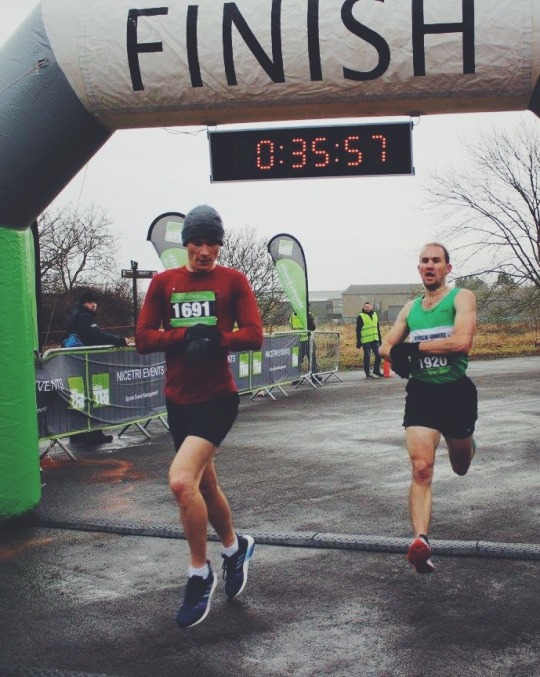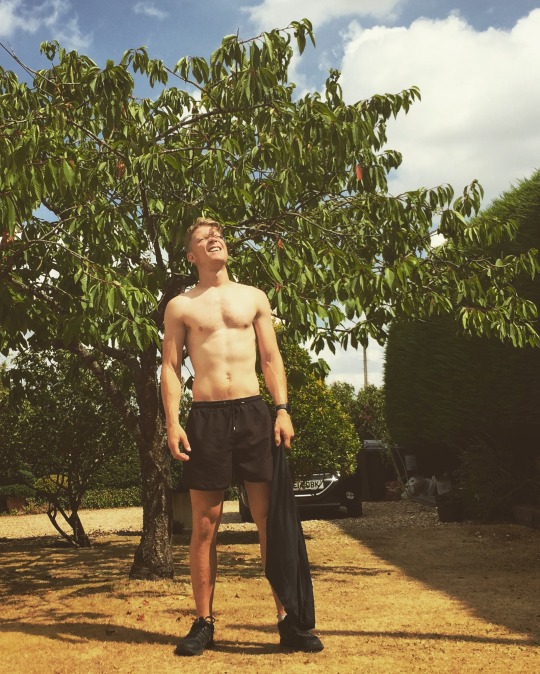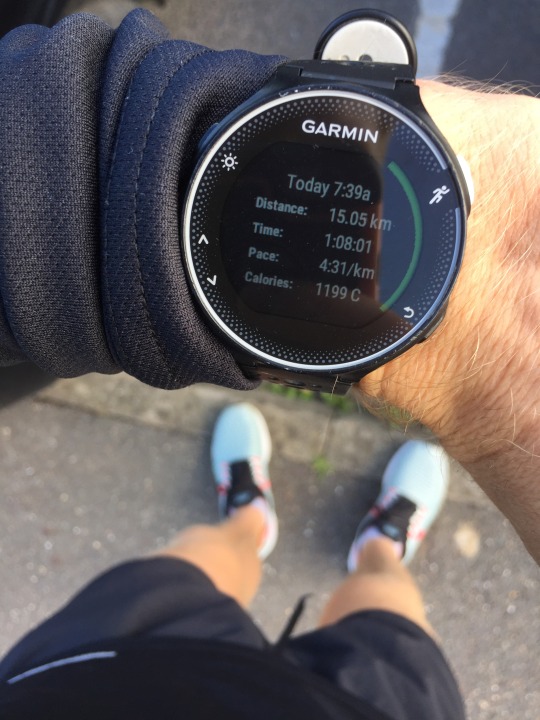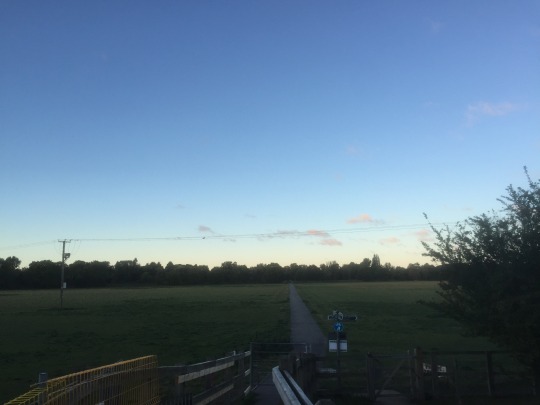Day 9
Anyone who knows me, will know how much I
love running. It is a genuine addiction; I find a day without any movement/exercise
in general a complete misery but running is my favourite way to exercise (open
water swimming comes a close second). Now I do enjoy the way strength
training/gym work makes me look and I’m well aware I could look good without
running every day, but running just gives me a feeling that for the rest of the
day, makes me feel electric – like ‘anything is possible’. Also, I enjoy
knowing that, if my day starts with a run, no matter what else happens that day
at least I did the run and that was my time spent doing my thing.
Anybody who says they don’t like running
usually hasn’t run for long enough or far enough to realise how good it makes
you feel. That said though, I do understand that everyone is entitled to their
own opinion and I have full respect for anyone who commits to a sport because it
makes them feel good. It’s a wonderful thing, to find an activity that gives
you that feeling, I feel sorry for those who have yet to find out what theirs
is.

(Graham Water 10km, December 2017)
Anyhow, here are some tips and tricks for
anybody reading this that might want to try running, or already runs but is
interested in what I find has helped me through the years to becoming, not only
a better runner, but a more efficient, less injured and healthier runner:
1.
Learn to run.
The best way to put this
is in swimming terms. Let’s say that one day, you decided that you were going
to go swimming, but you don’t know how to swim. Perhaps you understand the
basic concept of how to swim but you’ve never really done it properly or maybe
you had lessons as a kid but didn’t really concentrate and get your form right.
Going to the pool and flopping your arms and legs around, hoping that you make
a length, would look pretty silly and wouldn’t be much of a workout. Also, you’d
likely be risking injury, if not to yourself then definitely someone else!
Running is the same. We often don’t think of running as having a technique because
it’s something that we just do. However, unless you were brought up in Africa then
chances are you haven’t been running every day since you learned to walk, learning
and practicing proper technique every day since. I won’t go through proper
running form on here but it doesn’t take much searching to find a guide on how.
Just know that if your form isn’t correct, when you first start running with a
proper form, it will feel weird.
2.
Fuel your workouts.
If you’re just a casual
jogger who hits the occasional 5km then this doesn’t really apply to you, but
if you’re training on the regular then you need to be adequately nourished –
especially if you’re hitting long distances and high mileage weeks. The
problem, particularly with running, is that most people start because they want
to alter their body image – lose weight, tone up, etc. First things first,
whilst running can help you lose weight and might give you some muscle tone on
your legs – it’s not going to give you a fitness models body. If you want to
look like James Bond coming out the sea then running isn’t the answer – you need
to be hitting the gym. Running long distance burns a lot of energy and if you’re
not replacing that energy adequately, you will burn out and it will result in
injury. Think of a car without any petrol, when you run out of energy – you won’t
be running anymore. Then think of a car that runs out of oil – under eating
eventually breaks the body and it can’t find the energy to repair itself. I run
a lot, so I track my daily caloric in and outgoings as well as my
macronutrients to make sure my body gets all the nutrients it needs and is adequately
fueled – for anyone interested I just use MyFitnessPal and have done every day for
about 2/3 years. Running an hour everyday means I eat a lot, but I’m not
wolfing doughnuts every 5 seconds; plenty of veggies, plenty of lean proteins, absolutely
no skimping on meals and avoid processed sh*t as much as possible. I don’t adhere to any dietary bracket and also don’t believe in cheat meals – if it’s made properly and eaten in moderation then all food is good.

3.
Get to know your physio.
Most runners take a trip
to the physio when they get injured, by which point, it’s too late. The point
is to take care of your body whilst it is healthy, don’t wait until you’re in
pain to get a sports massage. Get a regular massage. Go once a month, even when
you’re feeling fresh and springy. Professional athletes are on and off the bed
on the daily, some of us amateurs are hitting the same millage as them, so you
need to take that into consideration. I actually would recommend that everyone
go and see a physio once a month, whether you’re training or not – modern
living means that almost everyone is full of muscle imbalances that will
eventually lead to injury. How many old people complain about back pain?!
4.
Get some gear.
Gear I couldn’t live
without: Firstly, trainers – don’t waste your time on ‘support’ shoes. In Chris
McDougall’s book Born To Run, there is a chapter about how the creator of the
first ever ‘support’ running shoe, had never run in his life and had done
absolutely no scientific based research to prove it worked – it was solely a
marketing move. There is no proof (see point 5 about research) that ‘support’
shoes actually do make you less prone to injury and many cases they’ve shown to
alter natural running form to make people more susceptible to muscle imbalance
and therefore injury. Get a neutral, relatively flat (low heel drop) pair of
trainers. If you’re busting up muddy terrain then consider trail shoes but if it’s
the concrete you’ll be treading on then go for road shoes: I use Nike Pegasus
(the OG trainer) and Nike Zoom Elites. Another must-have gear, for me
personally, is a watch that tracks your workouts. A proper one; apple watch
will work but Garmin are a sports brand that actually design their watches to
track runs, cycles, swims, etc.

5.
Do your research.
I’m not just a guy who loves
running and therefore goes running a lot. I have read a ton of runner
biographies, running related books, sports science journals, nutrition guides,
etc. I am fully invested in the sport. It’s a true passion. When I say
research, scrolling through Instagram definitely does not count. If you are
getting ‘facts’ from the internet then you’re doing the wrong kind of research –
books are your best friend. Even this blog post is just my opinion. I’d like to
think I have reasonable knowledge in the field but I’m just a human being who
is always learning – I should also mention that I don’t have any academic
qualifications in the field either. A book I would recommend, that covers all things
fitness, is Ross Edgely’s – Worlds Fittest Book. It covers all the essential
areas, not just for running, and it spells them out in simple terms. It is also
backed by accredited sports science journals. Ross being the guy who is
currently swimming the entire coast of the UK.

(This morning’s 8.5 miler – bliss)
So, there you are. A little guide to
running by me, Benedict. I’m not the best runner in the world, but I love it
and when you love something it’s good to tell people. I also love apple crumble
and vanilla ice cream – running means I eat that on the reg and somehow
maintain abs – just another reason to love it even more.
Peace & love.
BG